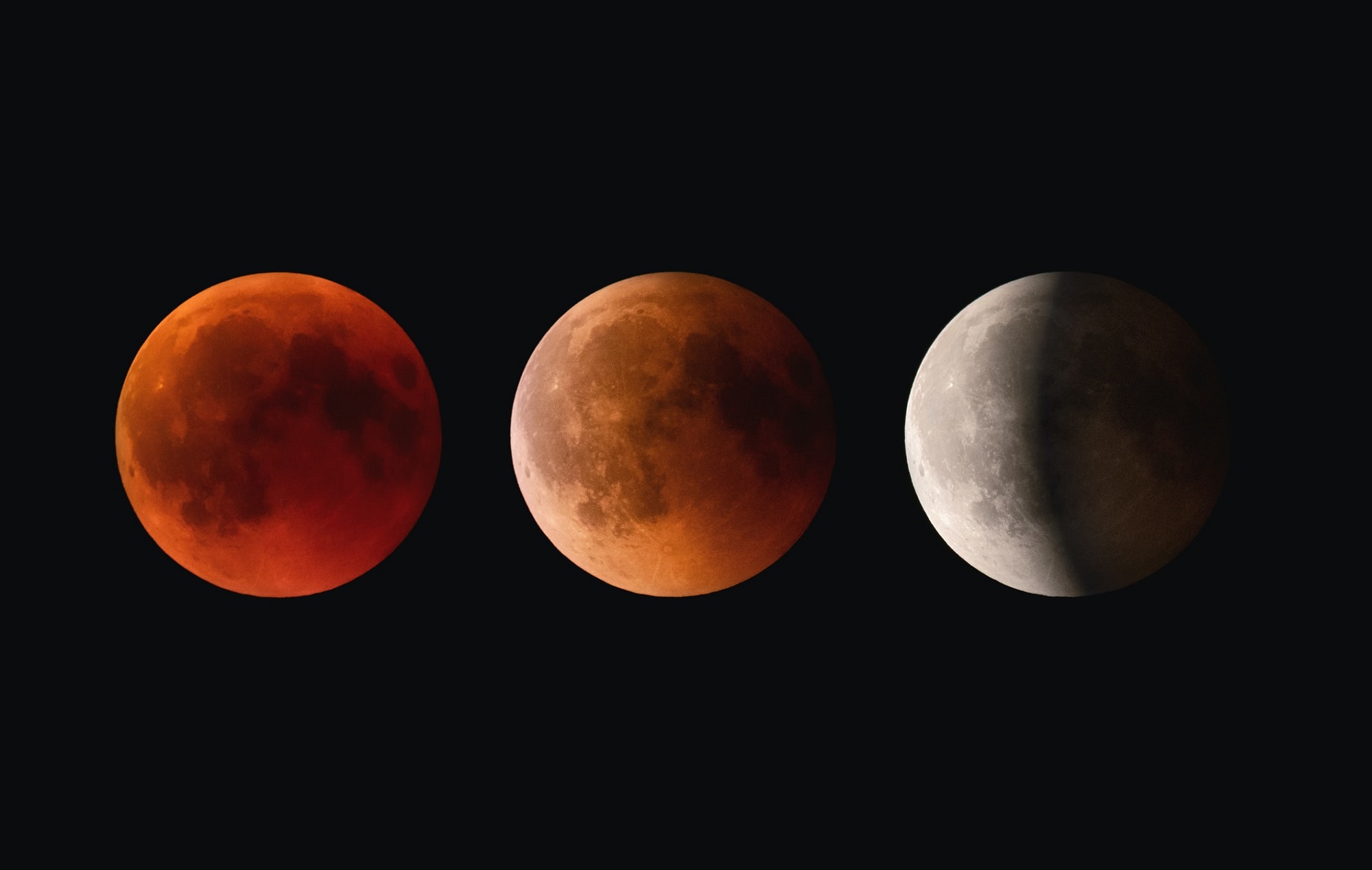

Lunar phases come and go, but the one passing through Earth’s shadow this weekend will take its time in the limelight.
From Sunday evening to early Monday, our pearly satellite will lapse into a total lunar eclipse, as well as its “super flower blood moon” phase. The first hints of darkness will appear on its surface around 10 p.m. Eastern on May 15. The totality part, when the moon is completely overshadowed, will last from about 11:30 p.m. Eastern on May 15 to 1 a.m. Eastern on May 16.
Total lunar eclipses, which happen when the sun, Earth, and moon land in a neat line, are usually seen twice a year in some regions. The Western Hemisphere will glimpse another one in November 2022—but the eclipse this weekend overlaps with maximum wax, which upgrades it to a blood moon (or what PopSci calls “the most metal moon”). As the orb moves through Earth’s shadow, sunlight refracted by atmospheric gases will bathe it in a penny-like glow. In effect, the moon will loom in the sky for the entire event, and look adequately bloody for at least half of it.
[Related: A total solar eclipse bathed Antarctica in darkness]
The “super flower” bit of the phenomenon is less scientific. A super moon refers to when the satellite’s orbit brings it closer to Earth, making it seem like it’s hanging larger in the heavens. The flower is just a seasonal label for the peak of the lunar cycle in May.
All this combined makes the upcoming eclipse almost unmissable, even with the naked eye. (A telescope or spotting scope will make for more comfortable viewing, but unlike in a total solar eclipse, you don’t have to protect your sight.) If you can’t pop outside for the late-night special, NASA will be live streaming the phenomenon from several cities in North America, Chile, and Italy. Or just check your social media feeds in the morning for the photos and time lapses.
In terms of astronomy, 2022 has been all about the moonshots. As NASA readies its lunar rocket for the Artemis I mission, other scientists have been digging into rock and soil samples from the Earth’s pock-marked companion. Earlier this month, a team from China modeled a process for producing oxygen and water from the moon’s minerals. And just yesterday, researchers from the University of Florida announced that they’d successfully germinated plants in regolith.
Thankfully, you don’t need a spacecraft taller than the Statue of Liberty to appreciate a lunar eclipse—an open window and clear night sky will do just fine.
